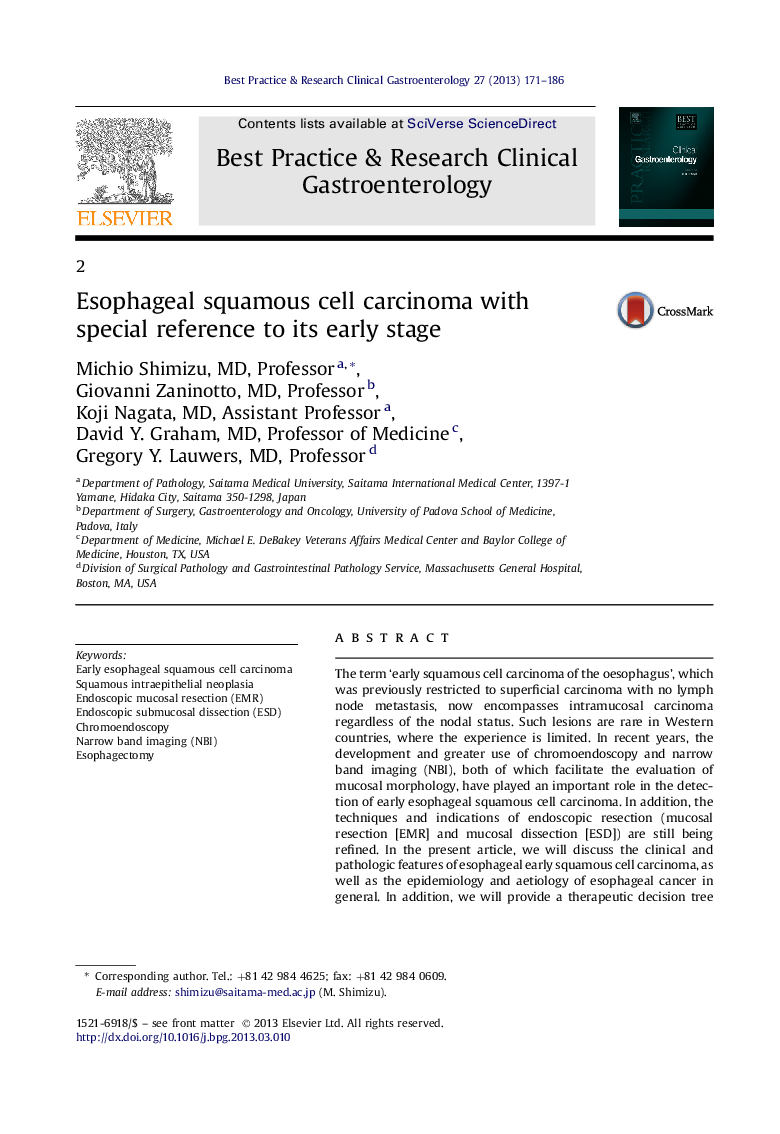| Article ID | Journal | Published Year | Pages | File Type |
|---|---|---|---|---|
| 3254338 | Best Practice & Research Clinical Gastroenterology | 2013 | 16 Pages |
The term ‘early squamous cell carcinoma of the oesophagus’, which was previously restricted to superficial carcinoma with no lymph node metastasis, now encompasses intramucosal carcinoma regardless of the nodal status. Such lesions are rare in Western countries, where the experience is limited. In recent years, the development and greater use of chromoendoscopy and narrow band imaging (NBI), both of which facilitate the evaluation of mucosal morphology, have played an important role in the detection of early esophageal squamous cell carcinoma. In addition, the techniques and indications of endoscopic resection (mucosal resection [EMR] and mucosal dissection [ESD]) are still being refined. In the present article, we will discuss the clinical and pathologic features of esophageal early squamous cell carcinoma, as well as the epidemiology and aetiology of esophageal cancer in general. In addition, we will provide a therapeutic decision tree taking into account endoscopic and surgical modalities as they apply to early esophageal squamous cell carcinoma.
